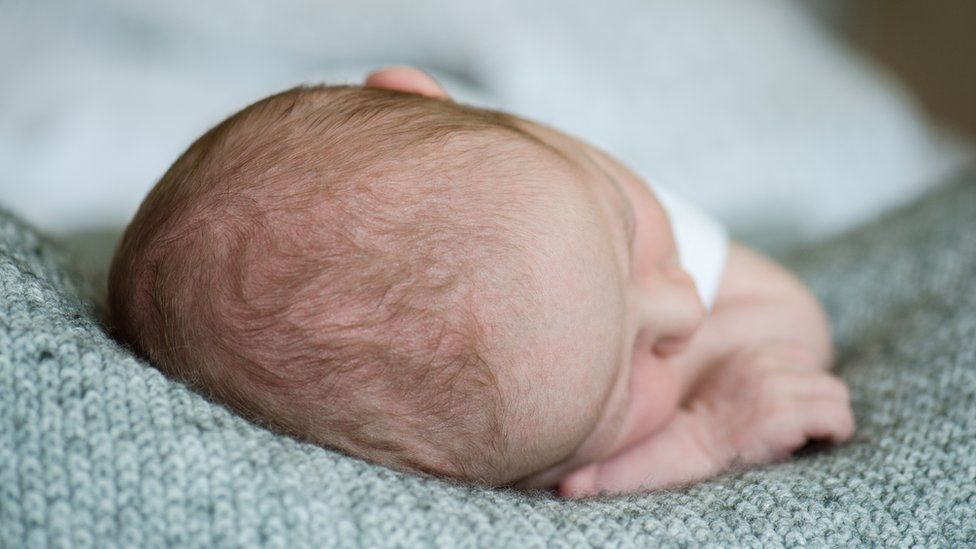How baby stroke survivors' brains adapt
- Published

A study of children who had strokes as babies has found they adapted to use a different part of their brain for language.
Imaging revealed language was based in the exact mirror opposite region to the normal left side area.
Georgetown University researchers hope their work will help the rehabilitation of adult stroke patients.
A UK expert said the brain had an "incredible ability" to make up for what was lost in a stroke.
It's estimated that one in 4,000 babies are affected shortly before, during or after birth by a stroke.
The plasticity of babies' developing brains makes them better able to recover from a stroke than adults.
The research, which is being presented to the American Association for the Advancement of Science (AAAS) annual conference in Austin, Texas, looked at 12 perinatal stroke survivors aged 12-25.
The case studies had few indicators that they had experienced a stroke - one had a limp and many had learned to make their left hands dominant because of the stroke damaging the right hand's function - but all had developed good language skills.
However they found that, because their brains were developing when they had the strokes, they were able to adapt.
Elissa Newport, a professor of neurology and director of the Centre for Brain Plasticity and Recovery at Georgetown University, led the study.
She says: "These young brains were very plastic, meaning they could relocate language to a healthy area, (but) it doesn't mean that new areas can be located willy-nilly on the right side.
"We believe there are very important constraints to where functions can be relocated. There are very specific regions that take over when part of the brain is injured, depending on the particular function.
"Each function, like language or spatial skills, has a particular region that can take over if its primary brain area is injured. This is a very important discovery that may have implications in the rehabilitation of adult stroke survivors."
The study is now being extended to a larger group, and will look at whether functions other than language are relocated, and where.
They are also carrying out more research into the molecular basis of plasticity in young brains in order to try and work out how to "switch on" plasticity in adults who have suffered a stroke or brain injury.
Strokes in babies
- A stroke happens when the blood supply to part of the brain is cut off.
- There are over 400 childhood strokes a year in the UK - around a quarter of these are in children under a year old.
- Babies are vulnerable due to stress on the brain during childbirth and the change in blood circulation from the mother to baby.
- Stroke in babies during pregnancy to 28 days after birth are known as pre- and perinatal ischaemic stroke.
- They are usually caused by clots breaking off from the placenta and lodging in the child's brain, or because of a blood-clotting disorder that the mother or baby may have.
- Strokes in the first few weeks of life are often missed and only picked up on when a child doesn't seem to be developing as expected, or is displaying a weakness down one side.
- Some children, especially newborn infants, may not show any symptoms. In babies up to 28 days old, seizures are a common symptom of stroke.
Dominic Brand, from the Stroke Association, said this was a small study.
But he added: "We do know that the brain can have an incredible ability to reorganise undamaged cells after a stroke, and make up for what has been lost.
"In many cases, with the right support, stroke survivors of any age are able to walk, talk and live independently again.
"But there is much more research that needs to be done to help us fully understand how the brain can recover after a stroke."
- Published8 January 2004
- Published12 February 2011
- Published1 July 2008